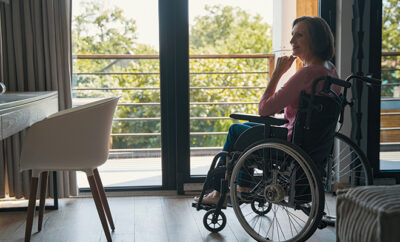
Music and Fitness: It’s a Positive Connection
“One good thing about music, when it hits you, you feel no pain.” ~Bob Marley
Music plays in integral role in the lives of people of all ages. It establishes connections to pivotal events in life and promotes fond memories. For the older population in particular, pleasing melodies can unlock a wealth of both physical and mental benefits. In fact, with numerous health benefits associated with music, such as improved memory, stress relief, increased immunity, motivation and even decreased pain from chronic illness, listening to music can improve one’s quality of life. In a sense, it is medicine for the mind.
In addition to all of the positive benefits music has on the mind, it can also have positive benefits on the body. This is vitally important for older adults who may need motivation to move around and incorporate some physical activity into their daily lives. As one ages, exercising can become more difficult, especially if one suffers from chronic illness or pain. However, exercise plays such an important role in the lives of seniors.
Researchers in the United Kingdom held a study wherein 30 older adults were asked to walk on a treadmill until they were tired. One group listened to motivational synchronized music; another group listened to non-motivational synchronized music; and a third group had no music at all. The researchers discovered the music correlated positively to the amount of time people were able to exercise. Translation? Music inspired and encouraged the study participants to walk longer. Even the non-motivational music encouraged those on the treadmill to walk longer than those who exercised with no music at all.
Whether we’re working out with weights, walking, stretching or dancing, the power of music invites us to get up, get out and get going. Seniors who engage in regular physical activity can enjoy the benefits of continued independence and restoration of function due to injuries or illnesses.
Most older adults have some basic understanding of the myriad health benefits associated with regular physical exercise. Seniors struggling with the discomfort associated with working out may simply choose not to engage in the activity. However, the positive effects music has on physical exercise are frequently magnified in older adults.
Get inspired and ready to move
Music can be used to stimulate the mind to want to move. It might remind someone of his or her younger years; it can function as a cue during exercise; and it can help with post-workout recovery. Music can positively affect older adults pre-workout, during exercise and throughout the process of post-exercise recovery.
Alleviate the symptoms of fatigue
A good song can shift one’s attention from feeling weary to feeling energized. As such, that favorite song can lower one’s perception about how hard he or she is actually working out. This, in turn, can promote a more positive emotional state, helping seniors avoid those thoughts that are driven by symptoms of exhaustion. If the music is intentionally selected with older people’s preferences in mind, coupled with the type of exercise involved, older adults often divert their attention from the pain and fatigue to enjoying a pleasurable workout experience.
In addition to providing overall health benefits by exercising to music, music also promotes motor skills. For example, some older adults may enjoy just kicking off their shoes and dancing in a completely relaxed and uninhibited manner to a favorite song from yesteryear. Not only is this a fun and rewarding experience, but it can also help one feel a bit younger and perhaps make them feel like a teenager again!
Find your groove
When music is synchronized with repetitive workouts, research has shown there is a direct correlation of increased levels of energy expended in those workouts. In other words, a well-created playlist can encourage more physical activity in seniors and more staying power with respect to the exercise routine at hand. There are numerous ways music can be applied to promote the workouts of older adults. The beauty of music is that it can help keep them on track with their workouts, opening the door to maintaining a healthy habit of exercising.
Even after the workout is complete, the music continues its good work by promoting healthy sleep, diminished pain and improved recovery times from illness and injury.
The best approach to integrate music into the lives of seniors is to select songs that are not only enjoyable but also familiar. Make sure the sounds are consistent with the mood you want to encourage. For instance, an upbeat song may evoke positive memories. Music that encourages clapping, singing and dancing is also a powerful tool. Plus, it really doesn’t have any rules at all. Go ahead and burst into song. It can make any routine more pleasurable. ■
Sources: eldercarealliance.org, musicandmemory.org and moveitorloseit.co.uk.







